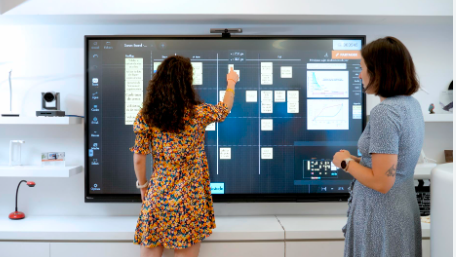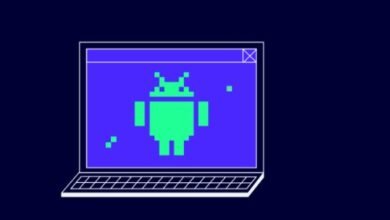The Quiet Tech Revolution in Schools: Why Interactive Displays Are the New Must-Have Tool

Take a moment to think about how much classrooms have changed over the past decade. From chalkboards to whiteboards, and now, to the emergence of smart technology, the way we teach and learn is evolving at lightning speed. Yet, one of the most exciting and transformative shifts in education is happening almost quietly—the rise of interactive flat panels. These tools are revolutionizing classrooms in a big way, and if you haven’t heard much about them, it’s time to explore why interactive flat panels are becoming the new must-have tool for schools everywhere.
The Evolution of the Classroom
For a long time, the traditional classroom setup involved a teacher lecturing at the front, while students sat in rows, taking notes and trying to absorb as much as possible. It was a tried and true model, but not without its flaws. Students often found it difficult to stay engaged, and different learning styles made it challenging for teachers to reach every student equally.
Enter the interactive flat panel. This cutting-edge technology has not only improved on what whiteboards and projectors were capable of but has also transformed classrooms into more engaging, dynamic spaces where students actively participate in the learning process. Imagine replacing your standard whiteboard with a giant tablet—one that everyone in the classroom can interact with. This is exactly what an interactive flat panel is all about: making learning more hands-on, exciting, and effective for students of all ages.
Why Are Interactive Flat Panels So Important?
One of the biggest benefits of interactive flat panels is how they turn learning from a passive experience into an active one. Instead of students sitting silently, trying to keep up with what’s written on a chalkboard, they can now come up to the front, interact with the screen, manipulate content, and collaborate with their peers. This kind of active participation makes learning more memorable and helps students truly understand what they’re studying, rather than simply memorizing facts for a test.
Imagine a math class where students can physically move numbers around on the screen to solve equations, or a science lesson where they can zoom in on an image of a cell, exploring its different parts with their fingers. Interactive flat panels help make abstract concepts more tangible, leading to those “aha” moments where things finally click for students.
Engaging the Digital Generation
Let’s face it—today’s students are digital natives. They’ve grown up surrounded by technology, and they’re used to interacting with screens, tapping, swiping, and exploring digital content. Asking them to sit still and listen to a lecture with nothing but a whiteboard to look at can feel like stepping back in time. Interactive flat panels bring the classroom into the modern era, providing students with the kind of interactive, tech-driven experiences they’re already familiar with.
Read also: How to Pass the CCNA Exam on Your First attempt
For teachers, this means fewer struggles to maintain attention. When students are invited to interact with their lessons, whether by solving problems on the panel or participating in group activities, they’re far more likely to stay engaged. And when students are engaged, they learn better. This simple truth is one of the reasons why interactive flat panels are quickly becoming an essential tool in schools.
Collaboration and Creativity in Every Lesson
Another amazing feature of interactive flat panels is their ability to foster collaboration. Traditional classroom tools, like whiteboards, don’t lend themselves well to group work. But an interactive flat panel can be a hub for group projects, allowing multiple students to contribute directly on the screen, share their thoughts, and solve problems together. Imagine a history class where students are tasked with creating a timeline of significant events—they can all work together on the interactive panel, each adding their own contributions, discussing, and learning from each other.
These panels are also fantastic for sparking creativity. Students can draw, annotate, and interact with digital content in ways that simply aren’t possible with traditional teaching tools. The interactive nature of these panels allows students to approach problems creatively, finding new solutions and exploring ideas in a way that’s much more hands-on and engaging than simply writing notes in a notebook.
Making Learning Accessible for Everyone
A significant advantage of interactive flat panel technology is its ability to cater to diverse learning styles. Every student learns differently—some need to see it, others need to hear it, and some need to do it. Interactive flat panels combine visual, auditory, and kinesthetic elements into one powerful teaching tool. Teachers can easily switch between showing a video, writing out a problem, and inviting students up to the board to solve it themselves. This versatility means that more students are able to grasp concepts in a way that makes sense to them, leading to better understanding and, ultimately, better learning outcomes.
For students with special needs, interactive panels also provide a level of accessibility that traditional tools can’t match. Features like screen magnification, text-to-speech, and customizable settings help ensure that every student, regardless of their abilities, can participate fully in the lesson. This kind of inclusivity is crucial in creating a learning environment where everyone feels valued and capable.
Empowering Teachers, Transforming Learning
It’s not just students who benefit from interactive flat panels—teachers do too. These panels come equipped with a variety of tools that make teaching easier and more effective. From built-in educational software to the ability to connect to the internet and access endless resources, teachers have everything they need at their fingertips. They can easily pull up videos, interactive exercises, and other digital content that helps explain even the most complex topics in a way that’s engaging and easy to understand.
And it’s not just about delivering content—interactive flat panels allow teachers to save lessons, notes, and annotations for future use. This means they can revisit concepts, provide students with copies of what was covered, and keep track of student progress over time. It’s an efficient, effective way to ensure that no student gets left behind.
The Future Is Here
The quiet revolution happening in classrooms around the world is anything but insignificant. Interactive flat panels are changing the way we teach, learn, and interact in educational settings. They’re making learning more engaging, accessible, and enjoyable for students of all ages, and they’re providing teachers with the tools they need to be more effective and impactful in their teaching.
As we move further into the 21st century, it’s clear that technology will continue to play an ever-increasing role in our lives. By integrating tools like interactive flat panels into the classroom, schools are not just keeping up with the times—they’re giving their students the best possible chance to succeed in a tech-driven world. The quiet revolution is here, and it’s time for all schools to get on board, embrace the change, and transform learning for the better.





